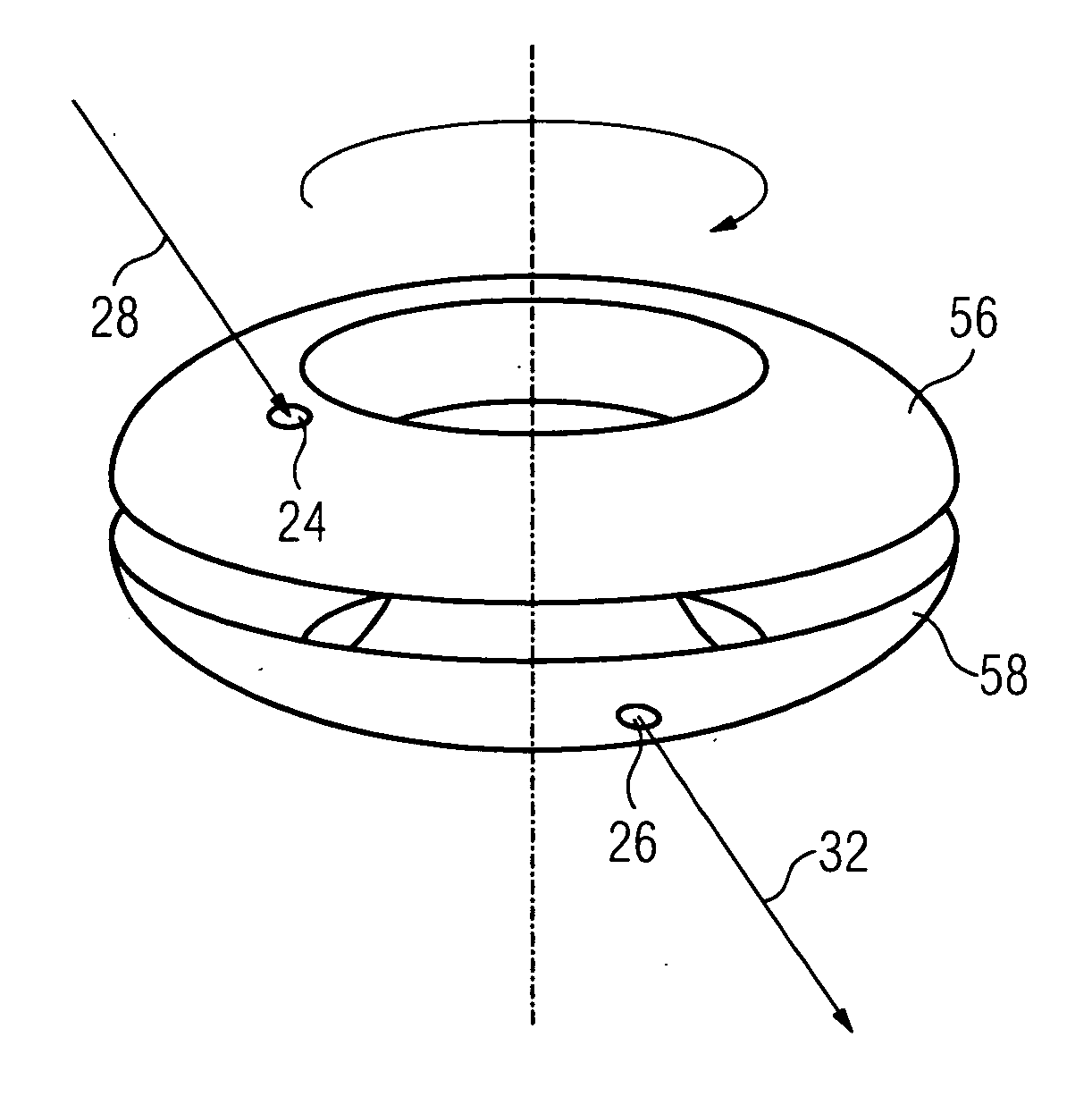Arrangement comprising two elements which can be rotatably displaced in respect of one another
a technology of rotationally displaced elements and arrangement, applied in the direction of optical radiation measurement, photometry using electric radiation detectors, instruments, etc., can solve the problems of scattering loss and achieve the effect of simple production, easy metalization, and extremely small tolerances
- Summary
- Abstract
- Description
- Claims
- Application Information
AI Technical Summary
Benefits of technology
Problems solved by technology
Method used
Image
Examples
Embodiment Construction
[0019]This currently concerns a machine, on which an element can be rotated, typically opposite to an element which is fixed in the space. It is now frequently necessary in the case of modern applications that information is transmitted from the fixed element to the rotating element or vice versa. With the present invention, it is common to different embodiments that they are suited to the rotation taking place by way of a hollow shaft, so that no exchange of data is possible in the axis of rotation. It is common to all embodiments that the data communication takes place by way of optical signals. The present embodiments allow only one single light source and one single light receiver to have to be used. Three different embodiments are shown in FIGS. 1, 3 and 7, namely neither the individual elements are shown, nor light sources and light receivers, but instead only the medium, by way of which the light is transmitted from the light source to the light receiver.
[0020]With the embodi...
PUM
 Login to View More
Login to View More Abstract
Description
Claims
Application Information
 Login to View More
Login to View More - R&D
- Intellectual Property
- Life Sciences
- Materials
- Tech Scout
- Unparalleled Data Quality
- Higher Quality Content
- 60% Fewer Hallucinations
Browse by: Latest US Patents, China's latest patents, Technical Efficacy Thesaurus, Application Domain, Technology Topic, Popular Technical Reports.
© 2025 PatSnap. All rights reserved.Legal|Privacy policy|Modern Slavery Act Transparency Statement|Sitemap|About US| Contact US: help@patsnap.com



